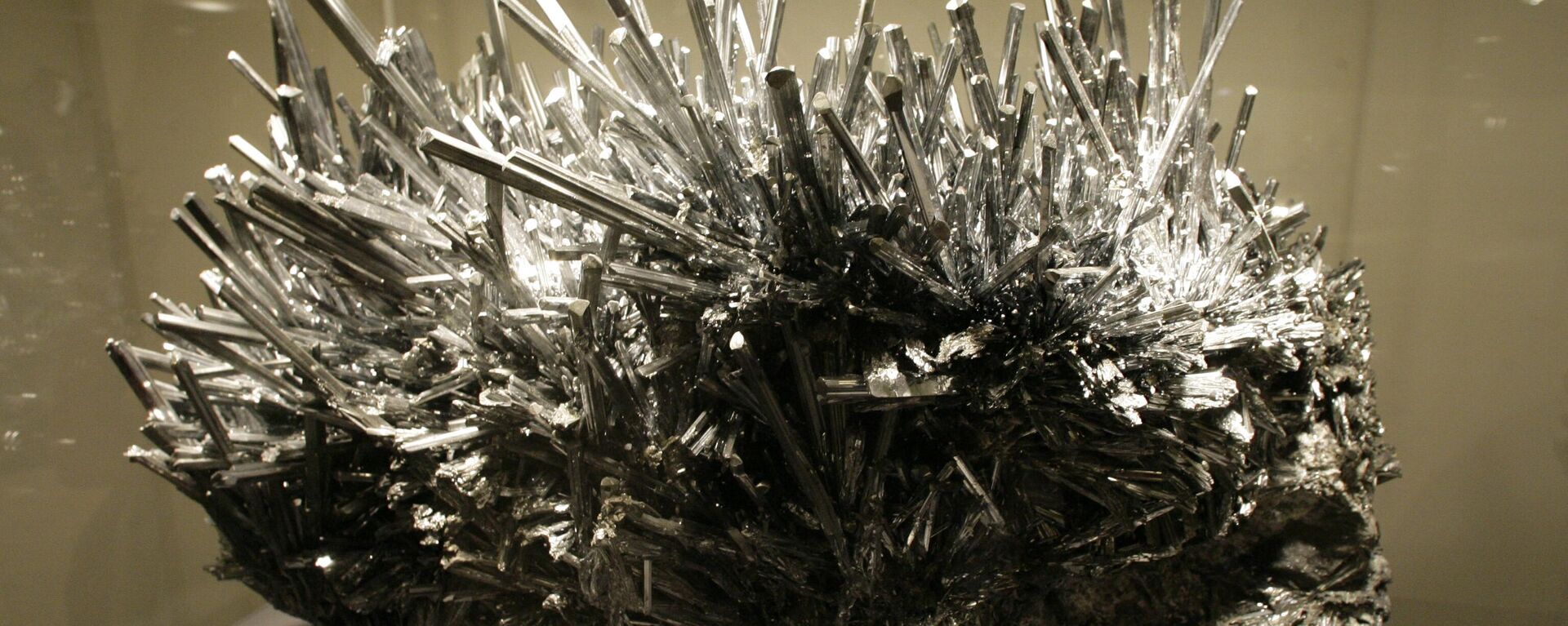https://sputnikglobe.com/20240820/biden-reportedly-approved-new-nuclear-strategy-refocusing-on-chinese-threat-1119849083.html
Biden Reportedly Approved New Nuclear Strategy Refocusing on 'Chinese Threat'
Biden Reportedly Approved New Nuclear Strategy Refocusing on 'Chinese Threat'
Sputnik International
President Joe Biden approved a classified nuclear strategy earlier this year that directed US forces to refocus on potential threats from China, the New York Times reported on Tuesday, citing US officials.
2024-08-20T21:28+0000
2024-08-20T21:28+0000
2024-08-20T21:28+0000
world
us
us-china relations
china
national security council
congress
north korea
russia
joe biden
nuclear
https://cdn1.img.sputnikglobe.com/img/07e5/04/1b/1082739692_0:160:3073:1888_1920x0_80_0_0_b930ca09adeb47c2bab84f42ebc1c29f.jpg
The report detailed that Biden had approved the new strategy in March, and that it refocuses on China's growing nuclear arsenal. However, it also addresses concerns of potential coordinated nuclear challenges by China, Russia, and North Korea against the United States. An unclassified report is expected to be given to Congress before Biden leaves office.Driving the development is the US' fear regarding China's nuclear stockpile, more specifically how it'll match up "in size and diversity" against Washington's own arms over the next 10 years.Citing June remarks from Pranay Vaddi, who serves as the senior director for arms control and non-proliferation on the National Security Council, the outlet noted the strategy adjustment was revised with the desire to "simultaneously" deter Russia, China and North Korea in mind.The Tuesday report comes days after China implemented export controls on antimony metals, which just so happen to have multiple applications within the US military, including in components for nuclear weapons. The new restrictions, in line with similar controls on other rare-earth metals, are due to take effect on September 15. Alongside with Tajikistan and Russia, China controls upwards of 90% of the global antimony reserves.A report from the Center for Strategic and International Studies think tank details the US' "stockpiles limited antimony of just 1,100 tons compared to the 23,000 tons consumed in 2023," adding that 63% of its stocks came from China alone.China previously underscored that its new directive was intended to ensure China's national security and to fulfill the country's non-proliferation obligations, and that its measures were not set to strike at any one country.The US and China last held talks on nuclear non-proliferation in July, although negotiations came to a halt in response to the US' arms sales to Taiwan, which China sees as a wayward province and American support to the island as interference in internal Chinese affairs.
https://sputnikglobe.com/20240819/chinas-restrictions-on-antimony-exports-could-cripple-us-military-industrial-complex-heres-why-1119827925.html
china
north korea
russia
Sputnik International
feedback@sputniknews.com
+74956456601
MIA „Rossiya Segodnya“
2024
Sputnik International
feedback@sputniknews.com
+74956456601
MIA „Rossiya Segodnya“
News
en_EN
Sputnik International
feedback@sputniknews.com
+74956456601
MIA „Rossiya Segodnya“
Sputnik International
feedback@sputniknews.com
+74956456601
MIA „Rossiya Segodnya“
us nuclear strategy, classified us nuclear documents on china, us-china nuclear arms talks, nuclear non-proliferation
us nuclear strategy, classified us nuclear documents on china, us-china nuclear arms talks, nuclear non-proliferation
Biden Reportedly Approved New Nuclear Strategy Refocusing on 'Chinese Threat'
WASHINGTON (Sputnik) - President Joe Biden approved a classified nuclear strategy earlier this year that directed US forces to refocus on potential threats from China, the New York Times reported on Tuesday, citing US officials.
The report detailed that Biden had approved the new strategy in March, and that it refocuses on China's growing nuclear arsenal. However, it also addresses concerns of potential coordinated nuclear challenges by China, Russia, and North Korea against the United States.
An unclassified report is expected to be given to Congress before Biden leaves office.
Driving the development is the US' fear regarding China's nuclear stockpile, more specifically how it'll match up "in size and diversity" against Washington's own arms over the next 10 years.
Citing June remarks from Pranay Vaddi, who serves as the senior director for arms control and non-proliferation on the National Security Council, the outlet noted the strategy adjustment was revised with the desire to "simultaneously" deter Russia, China and North Korea in mind.

19 August 2024, 14:02 GMT
The Tuesday report comes days after China implemented export controls on antimony metals, which just so happen to have multiple applications within the US military, including in components for nuclear weapons.
The new restrictions, in line with
similar controls on other rare-earth metals, are due to take effect on September 15. Alongside with Tajikistan and Russia, China controls upwards of 90% of the global antimony reserves.
A
report from the Center for Strategic and International Studies think tank details the US' "stockpiles limited antimony of just 1,100 tons compared to the 23,000 tons consumed in 2023," adding that 63% of its stocks came from China alone.
China previously underscored that its new directive was intended to ensure China's national security and to fulfill the country's non-proliferation obligations, and that its measures were not set to strike at any one country.
The US and China last held talks on nuclear non-proliferation in July, although negotiations came to a halt in response to the US' arms sales to Taiwan, which China sees as a wayward province and American support to the island as interference in internal Chinese affairs.



